Learn
Sound Waves
In the last lesson, you learned that sound is a form of energy that travels in vibrationsa movement back and forth or up and down or waves through matter that can be heard. When the sound waves enter our ears, our brain interprets the sound.
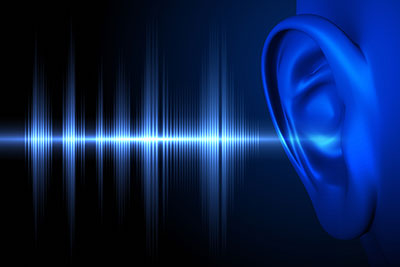
Watch the video Sound Waves (2:13) below to learn more about sound waves.
Let's talk about a basic sound wave. This picture represents a snapshot of a sound wave.

There are many different parts of a sound wave.
First, notice the straight, black line in the middle of the sound wave. That is called the rest position which is the mediumany solid, liquid, or gas – also called matter the sound is travelling through with no sound. Remember from the video that, in order for a sound wave to be heard, it has to travel through a medium! Is there sound in outer space? No, because sound cannot travel in the vacuum of outer space.

Once a sound wave passes through the medium, we add the actual wave.
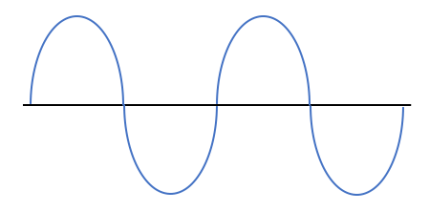
Notice that there is a high point and a low point to the wave. We call the high point the crest and the low point the trough.
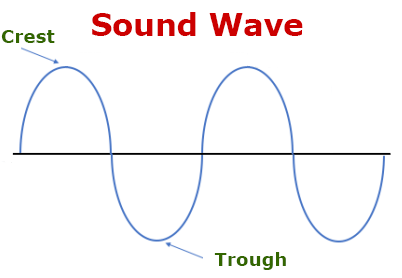
The distance from a crest to the next adjacent crest is called the wavelength.
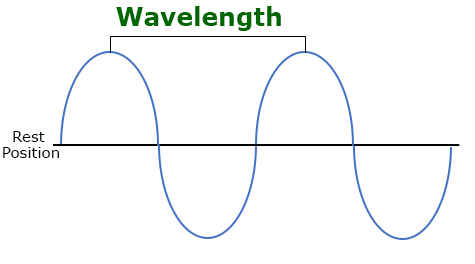
The distance from the rest position to the crest is called the amplitude.
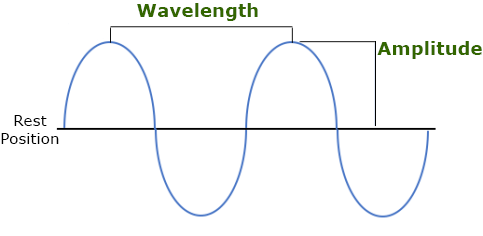
This is a snapshot of an entire sound wave with all the parts labeled.

All of the parts of a sound wave are important and relate to terms that you already know.
The crest and trough are measured in amplitude, which is volume. The larger the amplitude, the louder the sound. The smaller the amplitude, the softer the sound.
The wavelength determines pitch. If the wavelength is long, the pitch will be lower. But, if the wavelength is short, the pitch will be higher.
The distance is how long the pitch is sounded or the pitch length. To relate it to your notation lesson, if the picture represented a quarter note in length, the snapshot of a half note would be twice as long and a whole note would be twice as long as that.
To see a visual representation of sound waves, visit the Chrome Music Lab: Sound Waves interactive. In the interactive:
- The blue dots represent air molecules bouncing back and forth as sound travels through them.
- Tap the magnifying glass to zoom in and see a red line graphing the position of one molecule tracing the shape of the wave.
